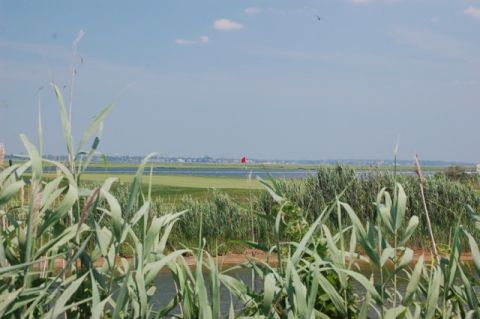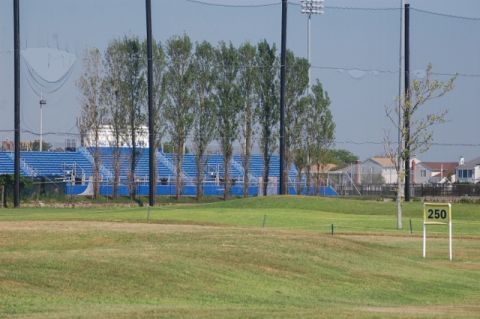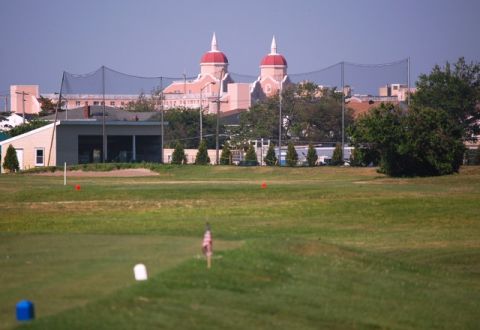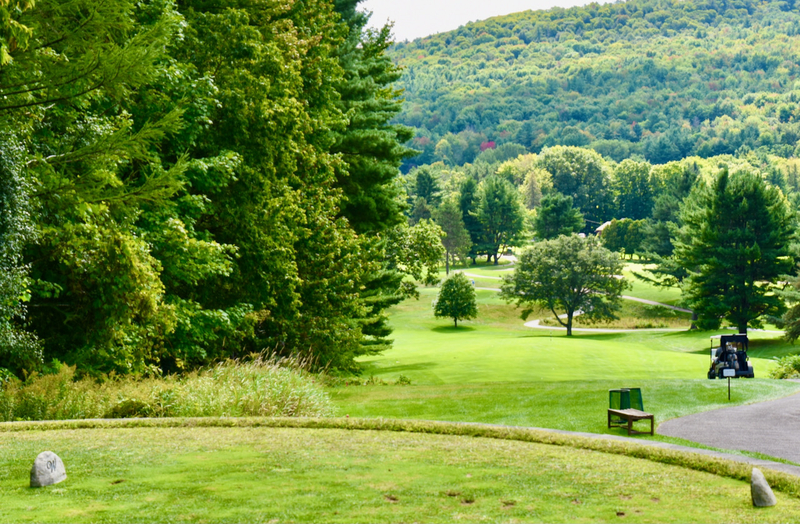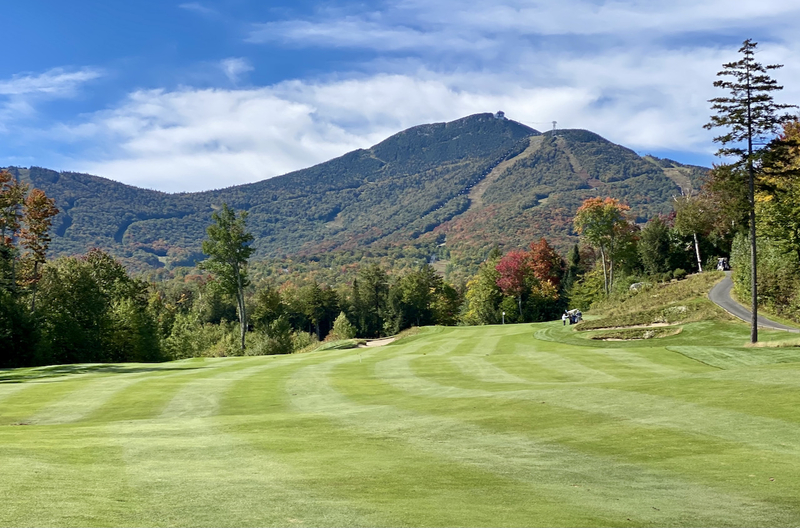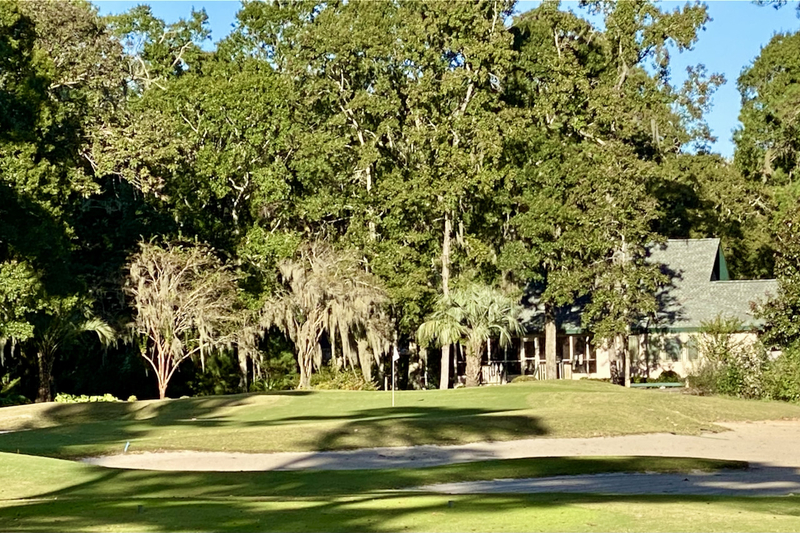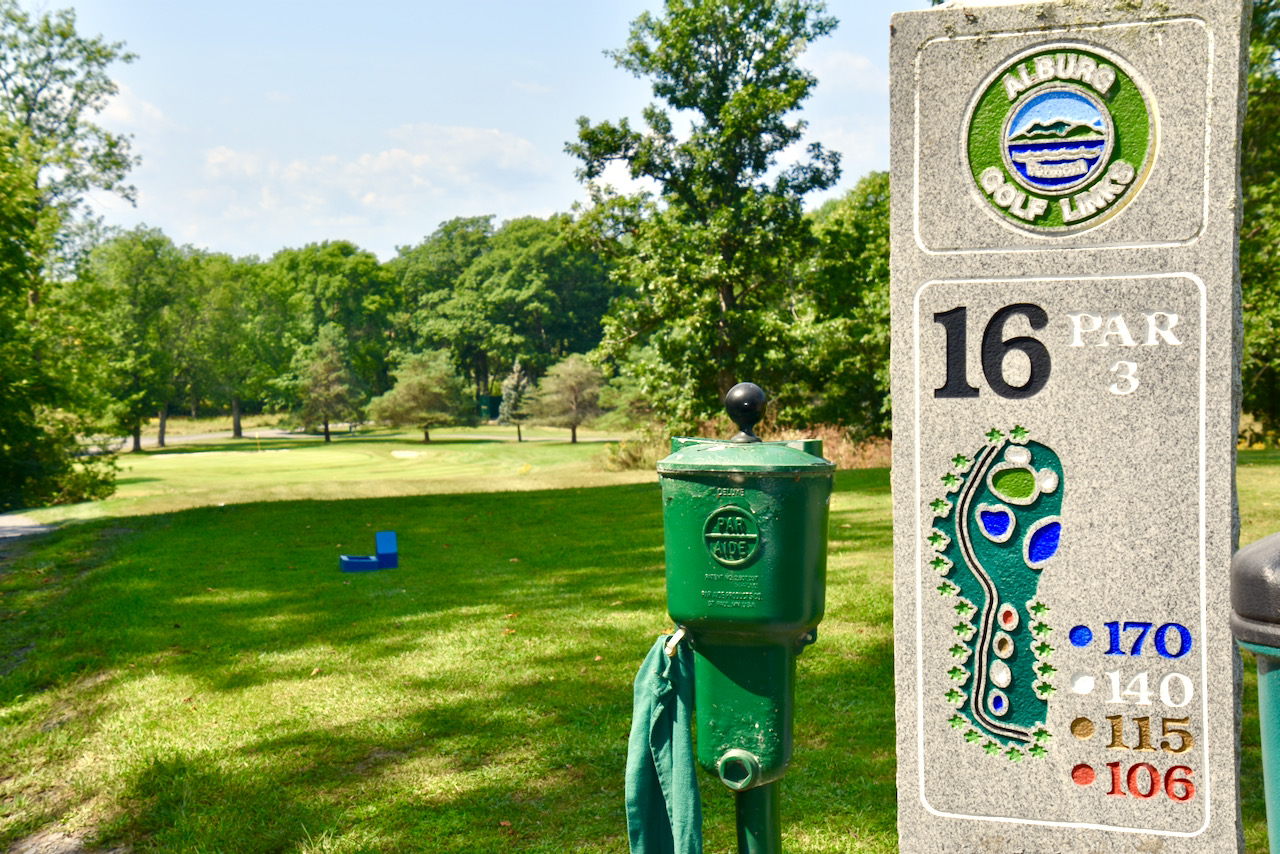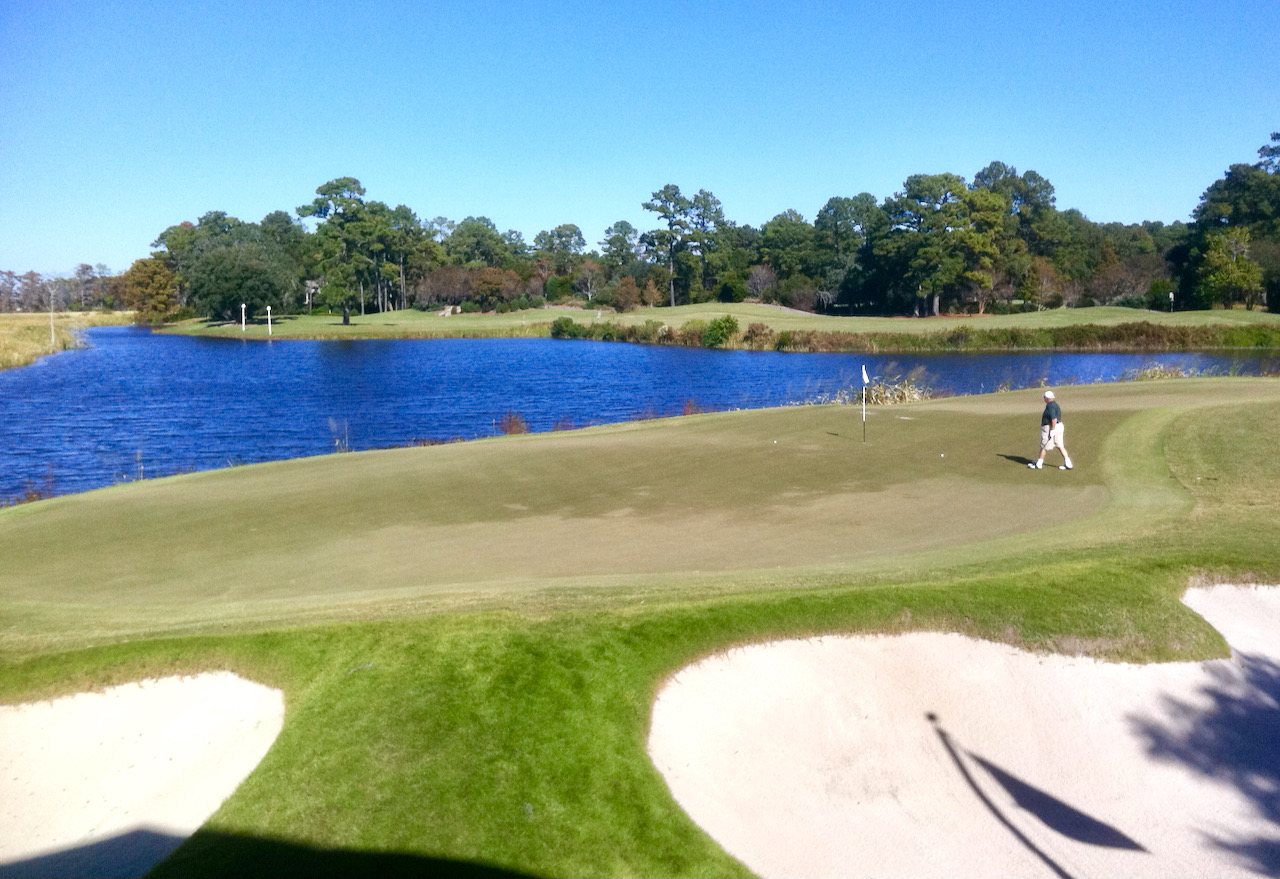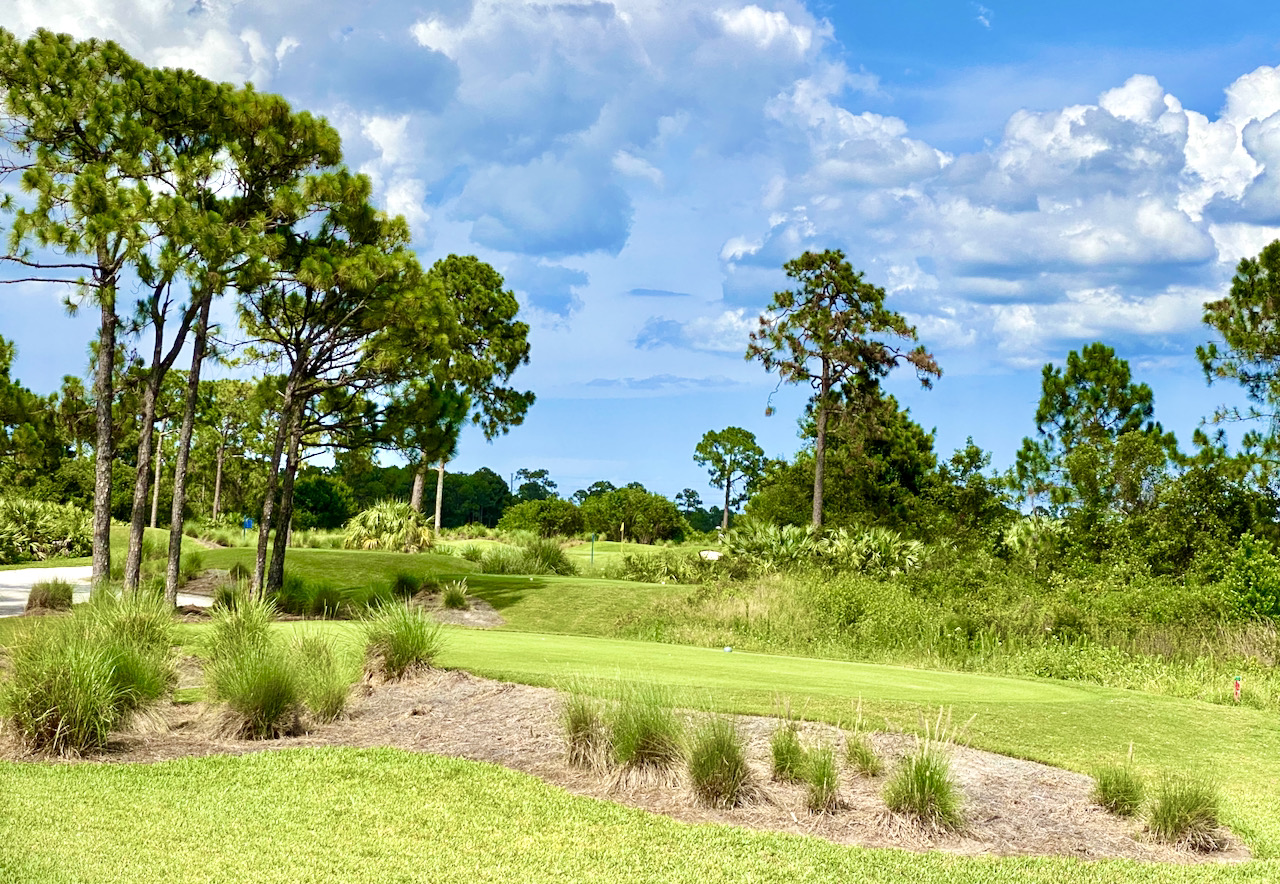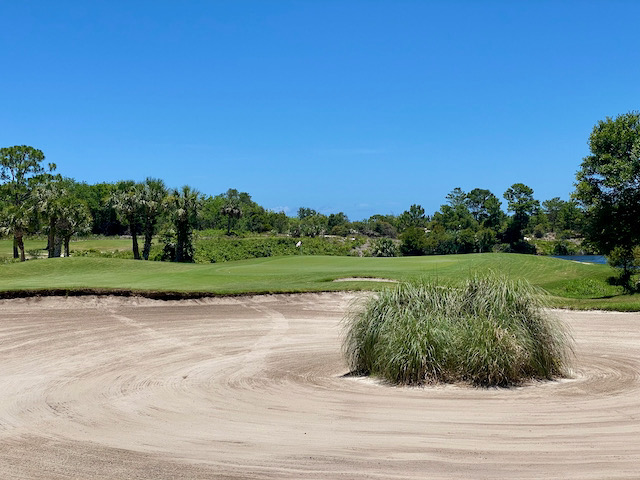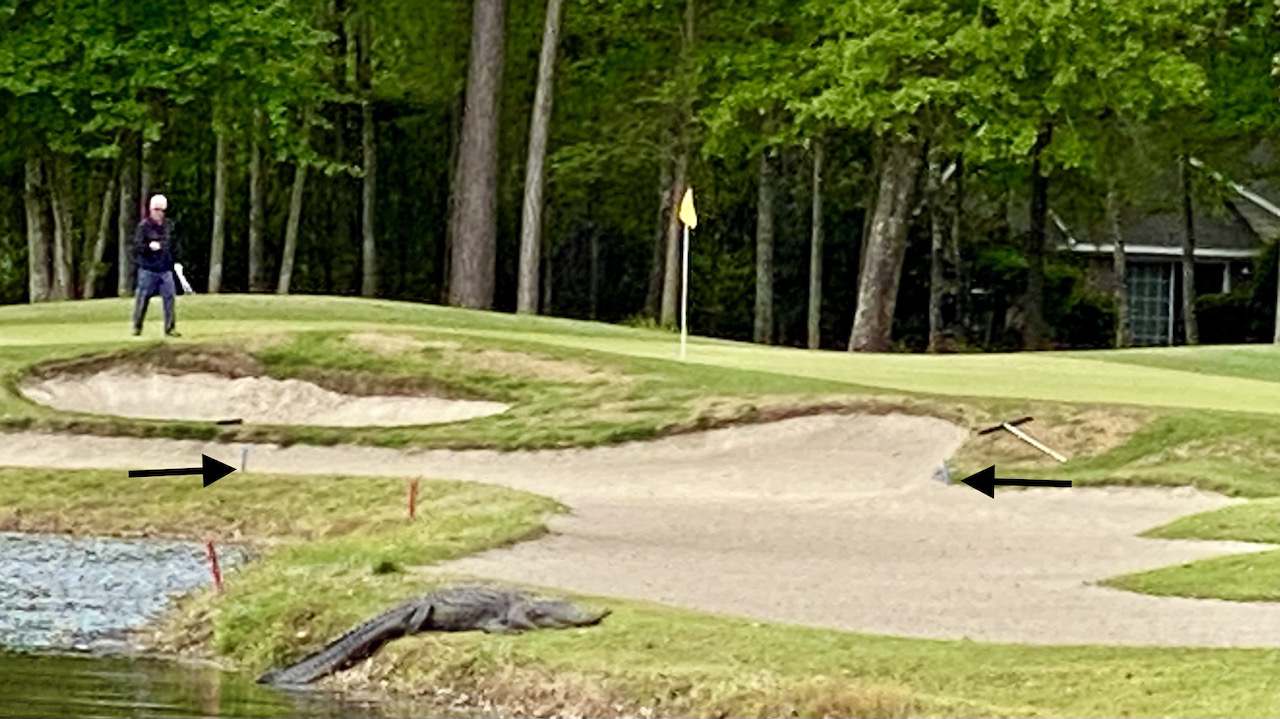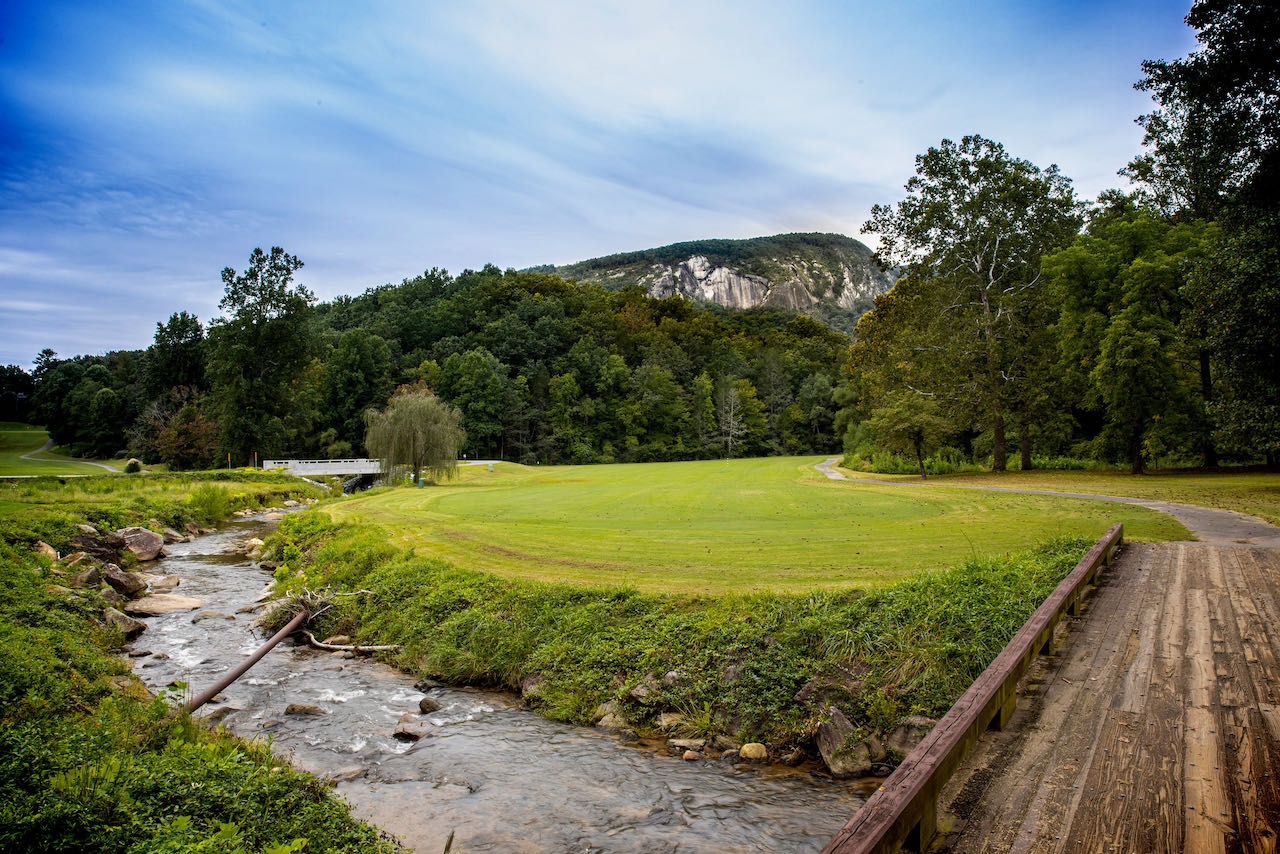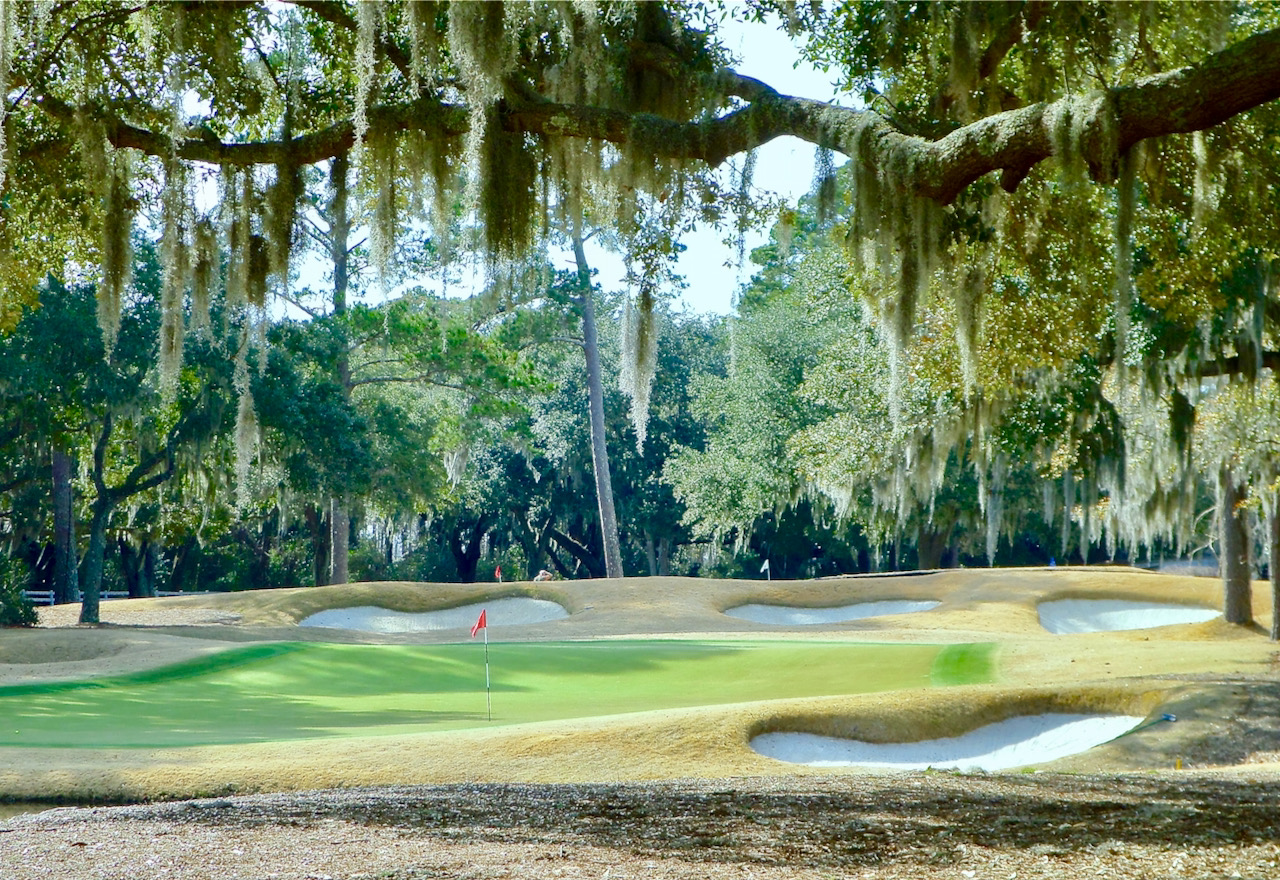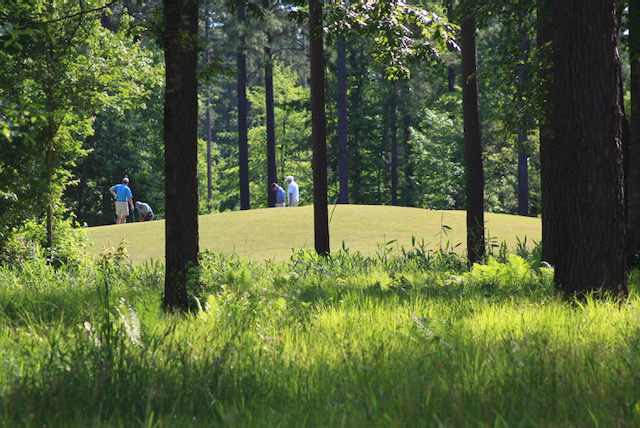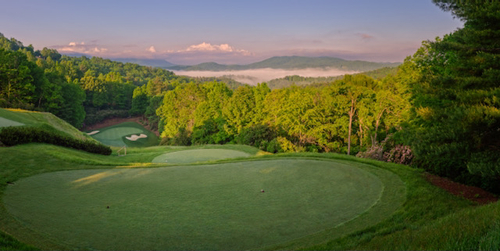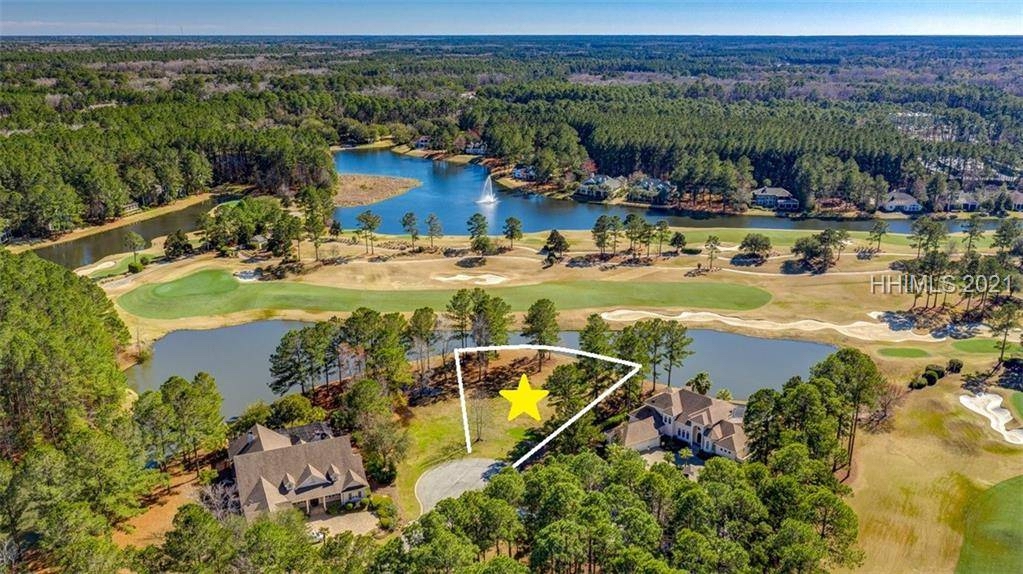The fairways, sad to say, are what keep the Lido Golf Club from being more than an “interesting” golf course, at least for now. The current condition of the fairways does not permit of anything close to summer rules (i.e. play it as it lies), even though I played it in the dead of summer. Mother Nature, not the management of the club, gets the bulk of the blame. If you are not familiar with the geography of Long Island, understand that Lido Beach is just east of the Rockaways, only slightly farther from Breezy Point, communities you should know from headlines in late October 2012, courtesy of Hurricane Sandy. As the two young locals I played with explained, the ocean didn’t rise up to wipe away the Lido clubhouse and drown all the club’s golf carts and deposit salt water across the submerged golf course; the surge came almost entirely from the Reynolds Channel and adjoining bay, well away from the beach.
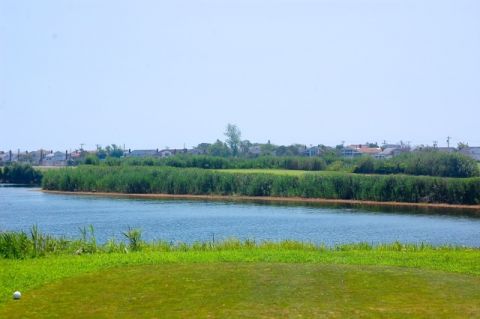
Hit or MIss: The par 3 17th at Lido, all carry, is one of three challenging finishing holes.
The overhead photos of the course in the wake of the hurricane are frightful and show more water than grass. (Click here for web site with photo.) The salt water must have lay on the fairways for days, eating away at the root systems and befouling the turf. Somehow, the golf course was able to reopen in March and, by my reckoning, club management has fought a brave but uphill battle to get Lido playable again. To be blunt, the fairways are a mess, a mix of weeds, patches of scraggly grass interspersed with patches of no grass. The tee boxes are marginally better. But one reason to be optimistic about the future of the golf course is the greens, which are uniformly excellent, if slow even by municipal club standards. Although the greens were grainy, and most of the grain always seemed to be working against the slopes (the ball wouldn’t break the way it looked), they were in outstanding shape considering the savagery of the storm and the amounts of salt water that came barreling across the 120 acres of so of links land. The elevation of the greens that might cause some players at Lido to curse occasionally helped them survive the flooding.
Scarred landscape with a nice finish
If you can get past the lies in the fairway -– don’t even think about playing the ball where it rests –- you can have yourself a fun day at Lido, especially if you haven’t played golf in Scotland for a long time –- or ever. Most holes really did remind me of golf in the Old Sod, where civilization encroaches on in-town courses. Moreover, the three finishing holes could stand up to most finishers anywhere. The 16th at Lido is its signature hole, unlike any links hole I’ve played and not to everyone’s taste. A short par 5 at just 460 yards, the fairway is composed of two distinct landing areas that form the shape of a ‘Y’ as you look out over the marsh from the tee box. Play to the narrow left prong if you want a safe layup over the marsh on your second shot to an area about 60 to 100 yards short of the green. Play to the right prong about 210 yards if you want a go at the green in two, all carry over the marsh. Both landing areas look like a thimble from the tee box. I chose the alleged safe route, but it didn’t matter when I popped up my drive just over the marsh and then had to play my second with an eight iron to the end of the left part of the ‘Y.’ A well struck four wood for my third shot took me over the marsh to just short of the green from where I failed to get up and down.
on in-town courses. Moreover, the three finishing holes could stand up to most finishers anywhere. The 16th at Lido is its signature hole, unlike any links hole I’ve played and not to everyone’s taste. A short par 5 at just 460 yards, the fairway is composed of two distinct landing areas that form the shape of a ‘Y’ as you look out over the marsh from the tee box. Play to the narrow left prong if you want a safe layup over the marsh on your second shot to an area about 60 to 100 yards short of the green. Play to the right prong about 210 yards if you want a go at the green in two, all carry over the marsh. Both landing areas look like a thimble from the tee box. I chose the alleged safe route, but it didn’t matter when I popped up my drive just over the marsh and then had to play my second with an eight iron to the end of the left part of the ‘Y.’ A well struck four wood for my third shot took me over the marsh to just short of the green from where I failed to get up and down.
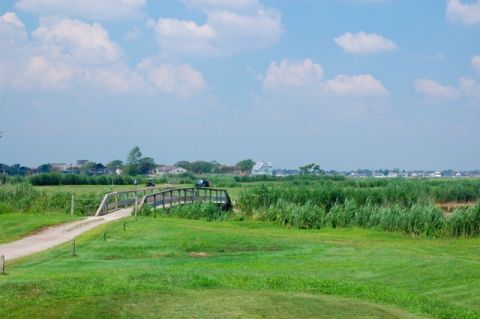
The par 5 16th presents two choices, the more progressive of them on the right (see yardage book above) and the more conservative on the left. Confused? So was I.
The 17th is a par three and a full carry of 185 yards over marshland. The hole plays toward the ocean, and if the prevailing winds are heading in off the beach, a 3-wood will often be the right play for many. The wind was not blowing more than 5 mph on the day I played, but the air was heavy and I choked down a little on a 4-wood. (I don’t carry a 5.) A good swing and green in regulation produced only my second par three of the day.
Keep your head down for a few reasons
The finishing hole, a longish par 4 slight dogleg left between three fairway bunkers and two ovule traps that guard the green’s entrance, is no relief after the 17th. The hole must have been a sight for sore eyes when the famous “Pink Lady” was mostly all that stood behind the green, a few hundred yards in the distance, and before that eyesore of a net separating the golf course from the football field and middle school and a yawning shed with three open driving bays at the base of the adjacent practice range. (Note: The Pink Lady was turned into condominiums in the 1980s and condemned in the wake of Sandy, which eroded its foundation.) As it is, the 408-yard finishing hole, which also plays into the prevailing winds off the ocean, is all about the bunkers; keep your head down to keep the eyesores out of sight and the drive and approach out of the sand, and your view of your score on the 18th might be pleasant.
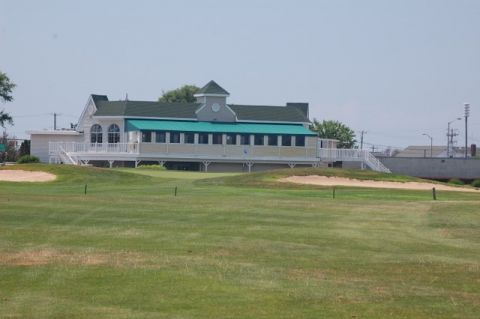
The former clubhouse was destroyed by Sandy, along with all of the club's golf carts, its computers and records and a lot more. The new clubhouse was built in a matter of months.
Lido had gotten beat up in some reviews, even before the storm, for its slow pace of play, up to 5 ½ hours on the weekend according to some reports. I played on a Wednesday of extreme heat –- it was 100 when I finished the round -- and clocked in at about 4 ½ hours. (I did notice some folks dropped out after nine.) We waited on virtually every shot from tee box and fairway but, in fairness, we were a threesome behind a few foursomes. I started off as a single, which I don’t mind when I am taking lots of photos, but the foursome behind me –- part of a sizable foursome men’s group -- became irritated that there was just a twosome in front of me. I got the hint and quickly joined the two young men in front of me. If you hate slow play, Lido is probably best scheduled for a weekday, and a Tuesday or Wednesday specifically. On the other hand, if you like links golf, live in the New York metro area, and can reconcile that this brave little golf club has a ways to go in terms of turf conditions, then pay the modest green fees, throw your bag on your shoulder and have a nice leisurely walk.
*
Lido Golf Club, Long Beach, NY. Designed by Robert Trent Jones, 1948. Par 72 from all tees. Gold Tees: 6,913 yards, Rating 73.4, Slope 127. Blue: 6,522/71.7/122. White: 6,125/69.8/121. Red: 5,291/68.8/115. Web site: www.lidogolf.com. Tel: (516) 889-8181.




